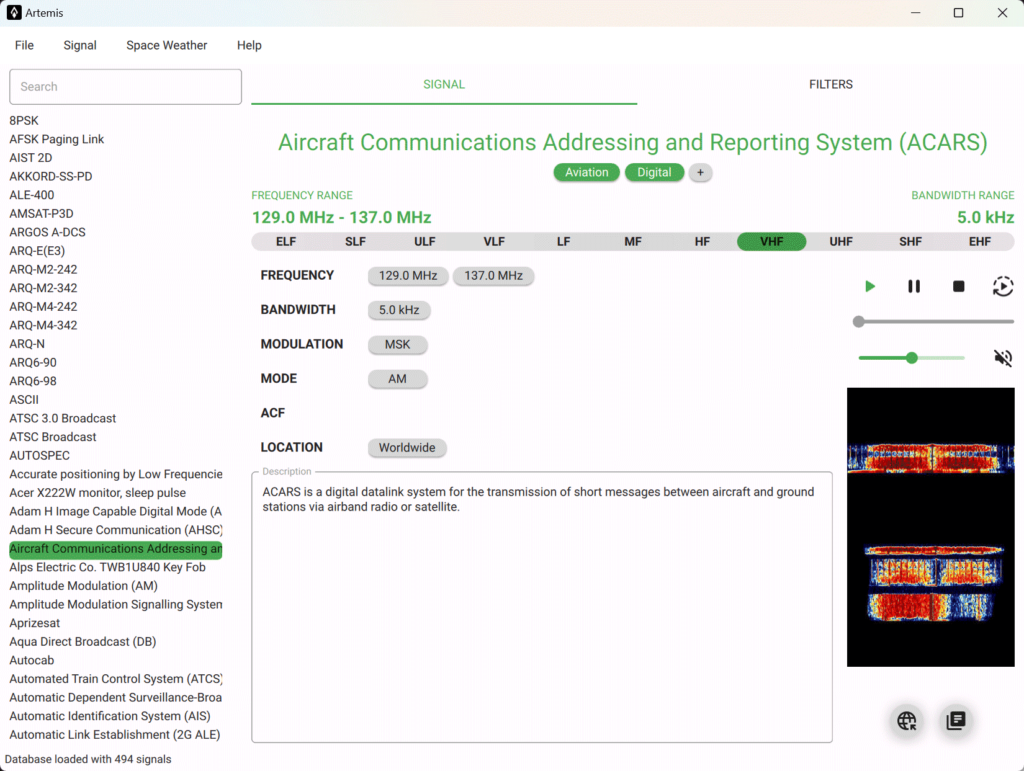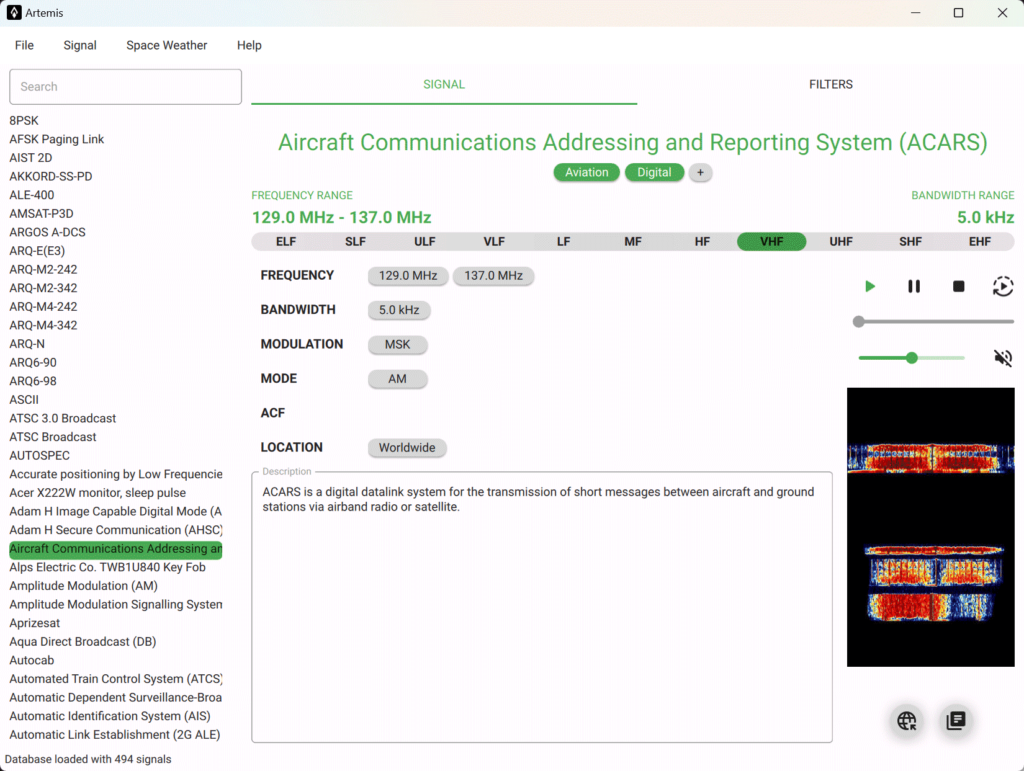Back in 2019 we posted about the release of Artemis 3, an open-source multi-platform program that makes searching through the Signal Identification Wiki offline possible and easy to do.
Recently Artemis 4 has been released which is an entire rewrite of the code, resulting in some substantial improvements, and paving the way for future features like machine learning based identification. Author Marco Dalla Tiezza writes:
- Artemis was initially designed to provide an offline solution for consulting the library of signals provided by the community on sigidwiki, but the database was formerly a simple .csv with all its limitations. Now the database is a proper relational sqlite which is much easier handled and offers many other possibilities like: additional fields (for example, each frequency of a signal can contain a description and this is true for every single parameter), faster db operations (for example, filtering signals is done by a simple query), increased extensibility due to the fact that new fields/parameters can be introduced in the future or by the user itself.
- The only searchable database with Artemis 3 was the Sigid wiki database.Now, with Artemis 4, users can create their own custom databases, enter an arbitrary number of signals and parameters, attach documents or any useful information, and export it by sharing it with their friends.
- The documentation has been completely revised to be as clear as possible and to be able to take the user from installation to advanced use of the program by giving instructions on how they can contribute to the project. DOCUMENTATION
- As usual, the program provides a real-time interface to be able to track space weather in near real-time, but now this module is more focused on RF propagation such as meteor scatter, EME, sporadic E, aurora spots, DRAP, aurora forecasts and many more (we are actively adding useful descriptors).
- Artemis 4 now relies on the PySide 6 graphics framework, which not only allows for a modern and newer, user-customizable GUI but also allows for less use of third-party libraries to run the program.
- Given the flexibility and especially the modularity of the new software, it is very likely that signal analysis functions will be introduced in the future (such as automatic recognition of signals via machine learning/neural network or simpler ones like FFT for obtaining ACF from an audio file, etc.)
- The homepage of the project (https://www.aresvalley.com) as been updated as well and there you can see some screenshots or directly download the software to give it a try.
If you weren't aware, the Signal Identification Wiki (sigidwiki) is our sister site, which we started a few years ago to collect and catalog various types of signals that an SDR user might see and hear on the airwaves. The idea is that a user could search the database to learn about and identify unknown signals. Over time it has grown significantly, now over 500 known signals with both waterfall images and sound samples available in the database. We have since handed over the operation of the Wiki to the community, with Carl Colena taking on the lead.

